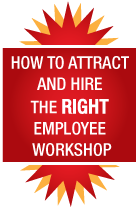The start of the workday in Japan: you meet with each other for a short time to get reacquainted since you last saw each other. You share information. You reconnect. You relate as people. You start each day from a place of commonality of mindset and purpose.
The start of the workday in the US: you create your personal to-do list, check your e-mail, get a coffee and get to work. Not much communication. Even less interaction. There is very little reconnection with others or to the commonality of mindset and purpose. Get to work.
At the center of all work is the “person” – the feeling, emotional and (we hope) thinking person. Work happens because of the people. They generate the ideas, the approach, the response, the energy, the attitude and the connection. Your people are your profits.
Customers connect best with people, not technology. Customers are loyal or leave because of people. Improvements and efficiencies happen because of people.Your people are your intellectual capital – the thinking, inventing, and solution-providing engines – of the company. And these engines need fuel – that fuel is emotion.
In today’s interpersonal and service workplace, the personality of your employees is the personality of your business. Customers are now face-to-face and phone-to-phone with employees. These are thinking, feeling and emotional employees who bring their lives into the workplace (and bring their work into their lives). Emotions are a critical component of the personality and connection between employees, and between employees and customers. Emotions are not just for home anymore.
Studies presented in the book by Dr. John Fleming and Jim Asplund indicate that loyalty (something greater than “satisfaction”) in customers is inspired by an emotional connection to a brand, product, organization or person. Emotions drive loyalty. Loyalty drives results. So I guess if I remember my transitive property from high school geometry accurately (If A = B, B= C, then A=C), then if emotions drive loyalty and loyalty drives results, then emotions drive results.
Here are two ways to activate your employees’ emotional connection to and emotional investment in their work:
1. Job sculpt – customize jobs around what matters to employees. Get to know your employees – particularly their talents, interests and values – and build these into their roles or responsibilities. If the employee loves to write, involve him in the social media of the company. If the employee is great at coordinating events, charge her with the next company retreat. Add meaningful responsibilities that appeal to the employee and make a difference for the company to their existing roles. This activates their emotional connection to, and emotional investment in, their work.
2. Provide constant feedback. Spend the time with employees to catch them doing something great and provide (high-five) feedback; or catch them needing to improve, and support them with a process to get better. This creates constant contact between manager and employee in a supportive and “human” way. It helps the employee feel important, respected and valued (this feeds our emotional side). It also creates a bond with management that improves our personal connection.
How do you encourage your employees’ emotional commitment to and investment in their work? Do you treat them as critical valuable assets (things of value) to the organization or are they perceived as expenses (disposable and replaceable)? Remember, how you care for your employees (as people) determines how your employees care for your customers (as people).
Please share this with someone who can benefit from it. And contact me to learn how the Fire Up! Your Employees book and process has been created into 6 interactive learning modules to help every manager learn how to attract, source, interview, hire and retain today’s best people. Learn how once – and then bring this success approach and tools to your workplace.
customer service, emotional connection, emotional intelligence, employee performance, employees, feedback, fire up your employees, interests, job sculpting, manager, talents, your people are your profits
This entry was posted on Tuesday, January 29th, 2013 at 5:32 am and is filed under For Managers. You can follow any responses to this entry through the RSS 2.0 feed. You can leave a response, or trackback from your own site.





Hi Jay,
Meet you at SEMA. This was a nice post. Keep up the great work!
Did you ever get your books? Glad to keep our conversation going when you have time…
Jay